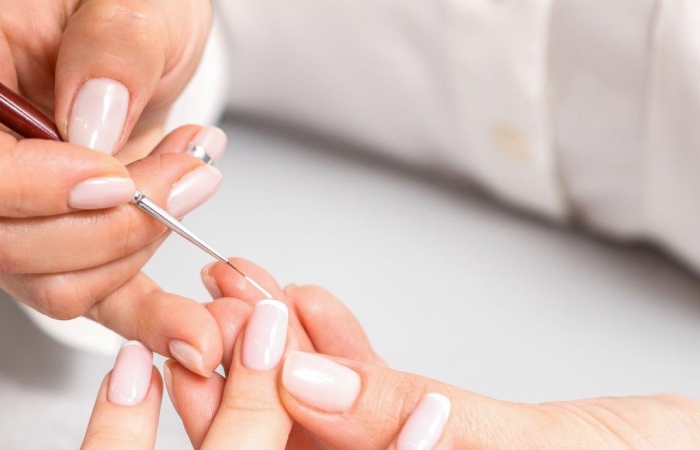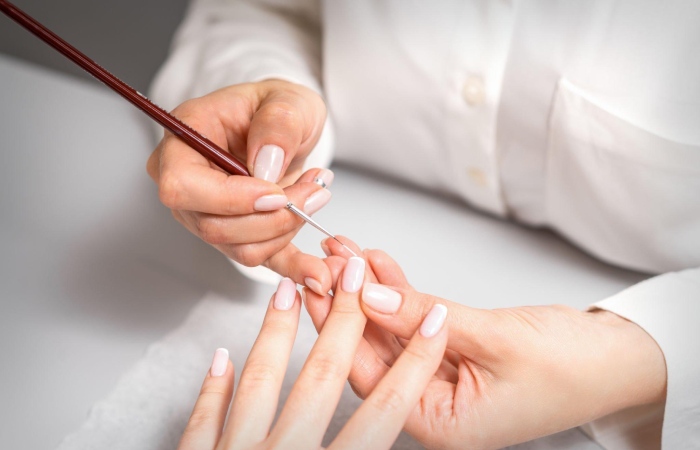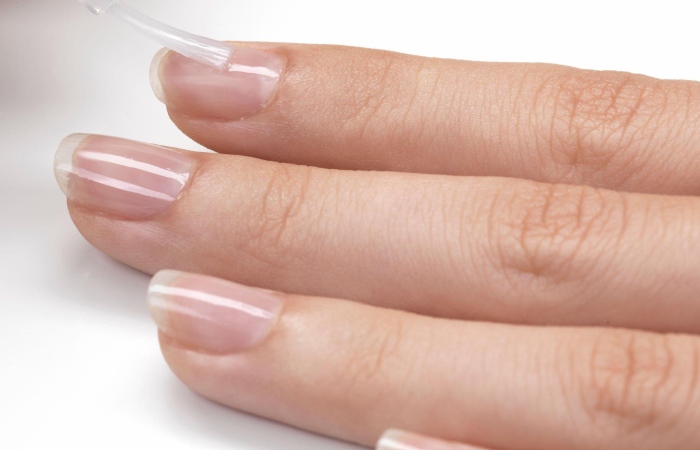Nail Tips – Nail Tips, which resemble a false nail that you glue onto the tip of your nail, are well-known worldwide in the manicure scene. The top is then coated with acrylic or a gel to add strength. Nail Tips can be formed in any way the client desires and are used to add length.
Nail tips are a really fun option for achieving unique and trendy new nail looks without having an extreme impact on the nails below. Depending on your lifestyle and personal tastes, you have a variety of styles and form alternatives to choose from.
There are a few key considerations you’ll want to keep in mind while choosing advice and making the best decisions for your requirements. The cost might vary greatly depending on how you get tips done and whether you go to a salon or apply them at home.
Additionally, it would help if you took your time to remove them correctly to prevent harming the nail underneath. Additionally, you want to check your nails.
A Range Of Nail Tips

You have options if you want to remove gel nails at home yet enjoy gels. While acetone is normally used to remove gel nails, if you are cautious and persistent, you may also be able to use cuticle oil and hand sanitizer. Taking off the gel nail from the surface of the natural nail
Most nail tips are constructed of plastic, frequently ABS (acrylonitrile butadiene styrene monomers), resilient but pliable, and can be molded into a flat surface without becoming yellow. To avoid quality issues like breaking when the plastic is remelted and reused, seek virgin plastic when buying tips that don’t contain recycled material. Well-less, full, or half-well may be preferred depending on personal tech preferences, but each can offer benefits in various ways.
Because they can be put anywhere on the nail plate, require no blending, and are ideal for adding embellishment with a smile line, well-less tips are the fastest and most flexible type of tip.
The greatest contact point and optimum grip are found in full-well tips. Because the well may cover up to half of the original nail plate, it is very effective at hiding bitten nails and other flaws. The vast surface area is suited for the majority of customers. Full-well tips need to integrate the most. Thus it’s preferable to use colored products to do so.
Personalizing Your Nail Tips

Similar to shaping nails with a nail form, it’s frequently important to customize your tips to match each client’s nail to get the ideal tip fit. The most important rule to remember while sizing your tips is to never undersize but rather to always oversize.
For adequate strength and construction, the breadth of the tip should fit from sidewall to sidewall. Always go up a size if you’re in doubt about your size, then file or trim the tip to suit.
Using a tip that is too tiny and not producing the proper structure may result in a susceptible portion of the natural nail being left without product, making it more likely to be damaged and aggravating your client.
Sidewall Architecture
Ensure the point you select doesn’t weaken the lateral wall’s construction. The side walls of many tips naturally bend or arch, which leads to vulnerability. Almond-shaped tips are more likely to have this weakness. It’s crucial to select a tip that offers a straight sidewall. Competition-type tips are my favorite since they are thin, simple to pinch when necessary, and have parallel, straight-side walls.
Fitting of tips to various natural nail forms
Dark C-Curve
A naturl C-curve can be seen in the nails of some clients. Tip fitting could be challenging due to its steep C-curve. There is a tendency to choose a tip that is too thin for the nail since average tips will not lay snug in the grooves and might create a gap at the point of contact.
After carefully examining the client’s nails, select a C-shaped tip that most nearly resembles the natural C-curve of the client’s nail plate. At the location of the smile line, a nail tip can be filed with a deeper C-curve. In addition, because it will be more flexible after being filed extremely thin before fitting, your tip will be easier to bend.
a flat nail
A flexible well is necessary to accommodate a flat nail. This may be accomplished by creating a little “V” at the tip, just like you do with a nail form. You may also file the corners of a naturally deep C-curve tip for flatter nail plates.
Even though having a large selection of tips in your kit isn’t always feasible, having a few different options and knowing how to adapt them to fit various nails is helpful.
How Do Nail Tips Work?

You have options if you want to remove gel nails at home yet enjoy gels. While acetone is normally used to remove gel nails, if you are cautious and persistent, you may also be able to use cuticle oil and hand sanitizer. Taking off the gel nail from the surface of the natural nail
Using nail tips to create stylish, one-of-a-kind manicure designs that don’t negatively affect the nails underneath is a lot of fun. Depending on your lifestyle and personal preferences, you have various design and shape options. There are a few key considerations you’ll want to keep in mind while choosing advice and making the best decisions for your requirements. The cost might vary greatly depending on how you get tips done and whether you go to a salon or apply them at home. Additionally, it would help if you took your time to remove them correctly to prevent harming the nail underneath. Additionally, you want to check your nails.
- They Have Less Impact Than Acrylics
Unlike a full set of artificial nails or other nail treatments, nail extensions can feel refreshing. Nail tips often have less effect on the nail and a lesser risk of irritation or long-term harm. Tips might be a wonderful compromise for your next extension, but paying attention to your nail requirements and choosing what works best for you is crucial.
- Not Every Style Is Equal
There are many various manicure options available to you, and this includes nail tip alternatives as well. There are alternatives for acrylic nail tips if you enjoy how they feel. In general, gel and dip nails have a considerably Gel and dip nails often have a considerably smaller effect and require less acclimatization. Examine your alternatives and choose the one that best satisfies your demands for comfort and style when choosing the finest approach for your subsequent addition of nail tips.
- Prices Can Differ
At Nailboo, everyone should have access to manicures and nail art. After all, maintaining healthy nails is crucial for your general well-being. The cost of artistic expression shouldn’t be prohibitive either. We provide a low-cost nail tip alternative that you can use in the convenience of your own home and are sharing everything that we know about nail tips and other exciting nail design options because of this.
However, the costs may differ greatly if you want to receive fashionable advice. Depending on the type of tips used and how intricate the design and style are, you may expect to pay anywhere from $85 to $400 for nail tips at a salon.
- Consider maintaining the system.
It would help to consider maintenance costs while deciding on your price point. Depending on the kind you choose, the complexity of the design, and how you apply them, tips can last anywhere from one to three weeks.
You will need to control growth’s consequences, just like with many other nail alternatives. That entails taking into account the expense and time required for stand-ins and adequate care, which will help keep your nails healthy and your tips perfect.
- It Takes Time to Get Used to Them
Your fingers will feel slightly different with any nail or nail extension, and tips are no exception. They influence both the thickness and length of your nail and the former. It may first feel heavy and imbalanced due to this. It’s crucial to spend a little more time performing chores like typing or opening items when you start putting your suggestions into practice.
Nail Tips Advice
It is a fake plastic nail that is put onto a nail to give the impression that it is longer. Nail tips come in several varieties. Some will cover the nail plate completely, while others will just partially do so. After it has been completed, nail enhancement chemicals are placed on top to thicken it. The nail extension procedure is covered in full by industry specialists at the Nail Art Technician Academy, along with all the safety measures you must follow.
How Are Nail Tips Used On Natural Nails?
The choice of nail tips is the first step. Nail tips come in various sizes and forms, including full, partial, and well-less tips. Once chosen, nail tips are sized by natural nails to ensure they fit comfortably without damaging them. If not done correctly, it can cause damage to your natural nail or even cause the nail tip to come off.
A nail technician uses thinning, polishing, and shaping of the nail tip during this sizing procedure. The nail tip becomes more flexible after polishing and thinning. The nail tips have adhered to natural nails after size.
Nail primer is then put on top of it after it has been glued and polished. After applying primer, a brush is used to apply the acrylic nail enhancement to the nail uniformly. Then using a nail grinder, the technician smoothes the surface of the nail extension and makes it ready for applying nail color.
